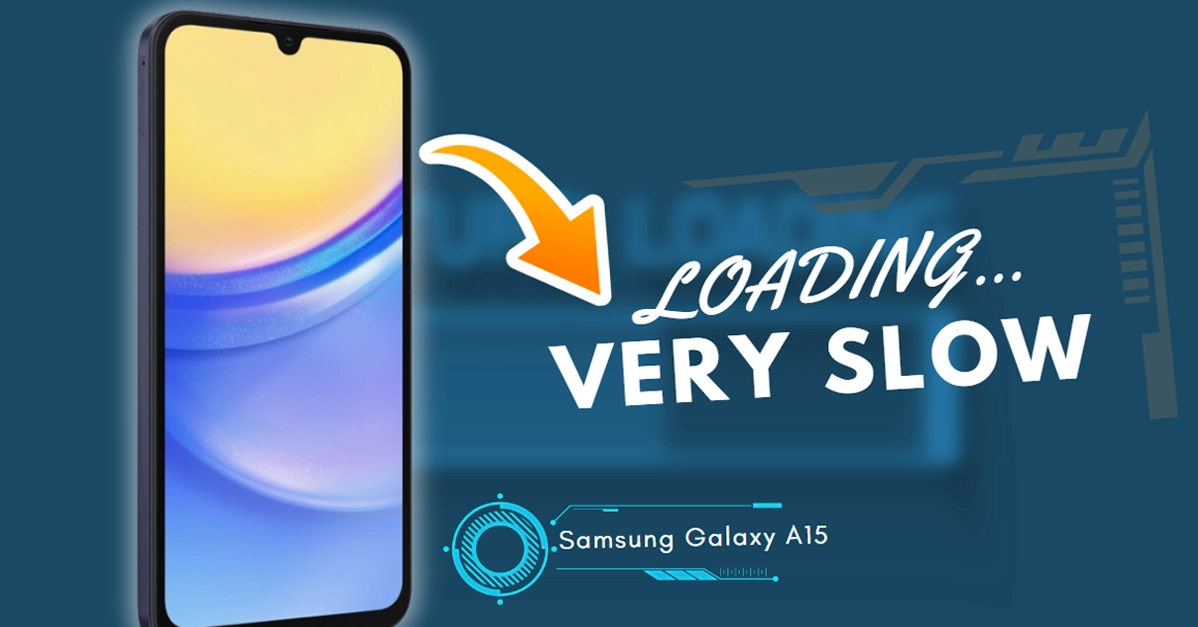If your Samsung Galaxy A15 is suffering from sluggish performance, it can significantly hinder productivity and overall user experience. This slowdown can be attributed to various factors.
This comprehensive guide will delve into effective troubleshooting techniques to optimize your device’s speed and efficiency.
Why is your phone slowing down?
Several factors can contribute to performance degradation in mobile devices. Here are the most common causes:
1. Insufficient Storage Capacity: When a device’s internal storage nears its limit, the operating system has less available workspace, hindering overall performance. This can manifest as delayed app launch times, stuttering, or general system sluggishness.
2. Outdated Operating System: Older operating system versions (such as Android or iOS) may lack the optimizations necessary to run efficiently on your device’s hardware. Additionally, newer app versions are often designed with more recent hardware and OS updates in mind, potentially leading to compatibility and performance issues on older phones.
3. Resource-Demanding Applications: Certain applications place significant demands on a device’s processor, memory (RAM), and battery. Graphics-intensive games, video editors, and social media platforms are frequent culprits. Running multiple resource-intensive apps simultaneously, or leaving them active in the background, will inevitably impact system performance.
4. Component Degradation: As mobile devices age, their internal components (processors, RAM, etc.) naturally lose efficiency relative to newer models. This means your device might struggle to meet the increasing demands of modern applications and operating system updates.
5. Battery Health Issues: To protect an aging battery and extend its lifespan, devices may engage in performance throttling. This involves intentionally reducing processor speeds to conserve energy, resulting in a noticeable slowdown.
6. Malware Infection: While less common, malware or viruses can execute processes in the background, consuming system resources and negatively impacting overall device performance.
General system-wide slowdown. Performance seems worst when multiple apps are open or running in the background (even simple ones). I’ve also noticed in the Developer Options that my animation scales seem to have been reset to 1x after the last update, which might be part of it.
Troubleshooting Your Slow Galaxy A15
1. Optimize Storage Space
Limited internal storage is a primary contributor to a slow phone. Here’s how to address it:
- Uninstall Infrequently Used Apps: Navigate to Settings > Apps. Review the list and uninstall those that are rarely used.
- Clear Unnecessary Data: Thoroughly examine your Downloads, Images, and Videos folders. Delete files or media that are no longer needed.
- Leverage Cloud Storage: Utilize platforms like Google Photos, OneDrive, or Dropbox to back up photos and videos, effectively freeing up valuable device storage.
2. Manage App Caches
Applications store temporary data (cache) for faster loading times. However, excessive cache accumulation can have the opposite effect.
- Clear Individual App Caches: Go to Settings > Apps. Select an app, then navigate to Storage > Clear Cache.
- Consider a Cache Cleaning Tool: Reputable third-party cache cleaners can streamline the process of clearing cache data from multiple apps simultaneously.
3. Reduce Background Activity
Applications running in the background can drain system resources. Mitigate this issue by:
- Reviewing Open Apps: Swipe up from the bottom of the screen and hold to access the recent apps view.
- Closing Individual Apps: Swipe left or right on any apps that are not actively in use.
- Utilizing the ‘Close All’ Feature: If available, use the “Close All” option to terminate background processes quickly.
4. Regularly Restart Your Device
A simple restart can often resolve temporary software glitches that might be causing performance issues. Press and hold the power button and select “Restart.”
5. Install System Updates
Software updates frequently include bug fixes, security patches, and performance optimizations.
- Check for Updates: Access Settings > Software Update > Download and Install. Install any available updates.
6. Reduce System Animations
While visually appealing, animations can add slight delays. To potentially improve responsiveness:
- Enable Developer Options: Navigate to Settings > About Phone. Tap “Build Number” seven times consecutively.
- Find Developer Options: Return to the main Settings menu, “Developer Options” should now be accessible.
- Modify Animation Scales: Locate “Window animation scale,” “Transition animation scale,” and “Animator duration scale.” Adjust these to 0.5x or “Animation off.”
7. Evaluate Home Screen Widgets
Home screen widgets, while convenient, can consume resources. Minimize the use of widgets or remove those that are not essential.
8. Explore Lightweight Launchers
Samsung’s One UI launcher can be somewhat resource-intensive. Consider reputable third-party launchers like Nova Launcher for a potentially faster experience.
9. Factory Reset (Use with Caution)
If all other solutions fail, a factory reset might be necessary. This will wipe your device data, so ensure a thorough backup beforehand.
- Back Up Essential Data: Securely back up your contacts, photos, and other important files.
- Perform the Reset: Navigate to Settings > General Management > Reset > Factory Data Reset.
10. Assess Battery Health
A deteriorating battery can lead to system throttling to preserve power. Battery health can be checked using third-party apps or potentially through Samsung’s built-in diagnostics.
If you continue to experience issues, it’s always good to check with a Samsung service center for further assistance
FAQs
- Q: Can malware cause my phone to slow down? A: Yes, malware can run in the background and consume your phone’s resources.
- Q: Will a microSD card improve my phone’s speed? A: It might slightly help if you move large files to the SD card.
- Q: Is it okay to use ‘phone booster’ apps? A: Use reputable ones sparingly, as most basic cleaning functions can be done manually.
- Q: Is there a ‘lite’ mode for my Galaxy A15? A: Check your settings; Samsung devices often have a simplified or ‘Easy’ mode.
- Q: How often should I restart my phone? A: Restarting once a week can help clear up temporary bugs.
